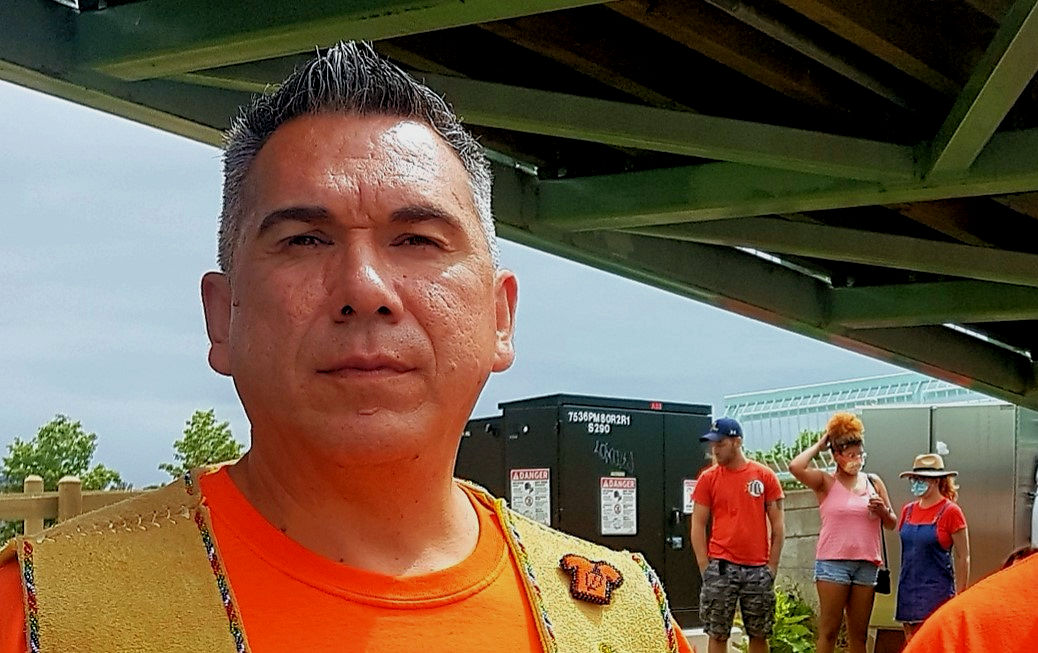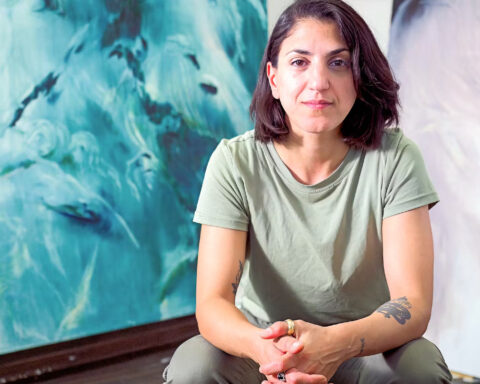A staunch defender of Indigenous rights and culture in Canada says he’s not worried that a record number of immigrants are making their way into the country.
Instead, Chief Allan Polchies Jr. of the New Brunswick-based Sitansisk (St. Mary’s) First Nation is embracing newcomers and applauding them for a willingness to learn about Aboriginal customs and for their overall commitment to make a better society.
“It [increased immigration] certainly doesn’t appear to be a problem,” Polchies told New Canadian Media. “Indigenous Canadians, typically, stand behind immigrants.”
According to Statistics Canada, an estimated population of 2.2 million non-permanent residents now outnumbers the 1.8 million Indigenous people enumerated during the 2021 Census.
Polchies, who became the first LGBTQ2AI+ chief in Atlantic Canada in 2018, said the Indigenous community is more than happy to tell newcomers what they are all about, regardless of how many there are.
“They find it fascinating because there is a story,” Polchies said. “That gives us the inspiration as Indigenous people to not only continue to celebrate but to ensure that we sustain it as we move forward for the next seven generations.”

About 2,000 people call Sitansisk, situated on the bank of the St. John (Wolastoq) River, opposite downtown Fredericton, home, making it the second largest Wolastoqiyik community in the province.
Immigration, Refugees and Citizenship Canada spokesperson Erin Kerbel said the stories of this country’s First Nations, Inuit and Métis peoples are essential to Canada and that’s why the Citizenship Act was amended on June 21, 2021, to include an updated Oath of Citizenship.
“The updated oath of citizenship directly responds to the Truth and Reconciliation Commission (TRC) Call to Action 94 (steps needed for the Canadian government to follow so that wrongs against Aboriginals can be righted),” Kerbel said in an email. “It also recognizes that Indigenous rights are both enshrined in section 35 of the Constitution Act, 1982, and that [newcomers] derive from the historic use of this land by Indigenous peoples. As new Canadians recite the oath, they make a personal commitment to observe the Aboriginal and treaty rights of First Nations, Inuit and Métis peoples.”
Kerbel said the department’s Settlement Program funds service provider organizations across Canada so they can deliver programming that creates meaningful dialogue and connections between newcomers, including refugees and Indigenous peoples.
“This programming also includes training and information to newcomers and refugees on Indigenous cultures, history and rights as part of a broader overview of material contained in the citizenship study guide,” Kerbel said.
Ali Bakhash of the Syrian Association of Fredericton said he began learning about Indigenous peoples and their experiences in detail when he started English classes after arriving in Canada in late 2016.
“They are amazing people; they are warriors,” Bakhash said. “They are still fighting to maintain their culture. They still have to fight in order to make everyone in the world aware of their story.”
Bakhash said communities should create more events and activities that bring people together so that everyone can learn more about each other.
“I think it is the responsibility of everyone, including Indigenous people and immigrants, to get together and listen to each other and to give everyone the chance to express themselves.”
Polchies said Indigenous people and new arrivals share some of the same issues with mainstream Canada, as both groups are sometimes blamed by other social groups for unrelated issues.
“Critics often point to refugees as the source of a problem, which strikes me as ugly and uncompassionate.”
Polchies, meanwhile, said it doesn’t take much effort to see the economic benefits that come from an increase in immigration.
“Immigration is the key to the growth of New Brunswick as well as Canada as a whole,” Polchies said. “Newcomers always come with an offering. Based on our economy today, they have to be able to contribute … whether that’s in B.C., New Brunswick or Newfoundland. I see a lot of hardworking [immigrant] people on the frontlines. It makes me wonder what [other] Canadians are doing. Are they just kicking up their feet, reaping the benefits and complaining to the Government of Canada that [immigrants are] not doing a good job? Who’s really doing all the work here?”
With several immigrants living close to the Sitansisk First Nation, Polchies said his Wolastoqiyik community is making an effort to meet their needs by offering culturally driven foods and other retail options.
“We factor that in and do our data and, when they visit our grocery store, there is a section that caters to the foods that they would traditionally eat,” Polchies said. “They are coming into our community making purchases … They are going to come and support us.”

Michael Staples
Michael Staples is a retired daily newspaper reporter from New Brunswick with more than 30 years experience. He has travelled extensively with Canada’s military and has reported from Croatia, Bosnia-Herzegovina, Kosovo and Macedonia during the Balkans War and from Haiti in 2004 following a three-week bloody rebellion that saw then-president Jean-Bertrand Aristide flee the country. He has also written extensively about Canada's involvement in the Afghanistan War. Michael has considerable experience covering crime, justice and immigration issues. In 1999 he was the lead journalist reporting on the airlift of hundreds of refugees from Kosovo to Canadian Forces Base Gagetown. He has been nominated twice for Atlantic Journalism Awards.




